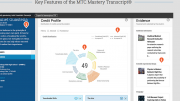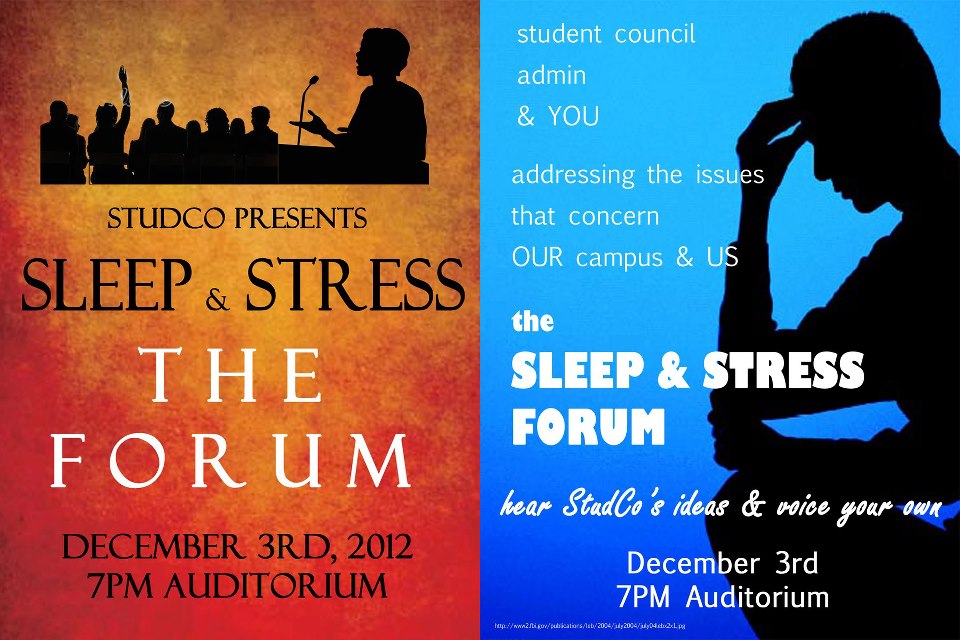In the late 18th century, Yale president, Ezra Stiles, formalized a grading scale to measure a student’s aptitude for a subject, using the descriptors Optimi, Second Optimi, Inferiores, and Perjores. We now use an A–F scale, but evaluating and assigning a “grade” to a student’s performance in a class is something we still do today.
Scholars have explored whether grading has been more detrimental than beneficial to a student’s learning in the past century. Anecdotal, and sometimes data-driven, observation suggests that students care more about the letter on their transcript than learning, as the purpose of secondary schooling has leaned towards maximizing college admissions.
In a hyper-competitive environment like the Illinois Mathematics and Science Academy, grades can function like social currency. Students are stressed because they are a percentage away from achieving an A; they calculate the maximum or minimum score they need to maintain an A, and people will go to any length to have the “best grades.”
As a result of IMSA allowing teachers flexibility with their curriculum and assessment, some are already experimenting with it. In this article, we will look at what mastery-based learning looks like, how it has appeared at IMSA, and what the future implications of this shift are.
What is Mastery-Based Learning?
Connecticut’s Official Department of State Website cites mastery-based learning as “…[requiring] students to demonstrate knowledge and skills before progressing to the next level.” Mastery-based learning allows students to utilize feedback given by teachers on assessments to remedy learning problems. This learning method lets students play a more active role in their education, and have more opportunities to understand the content through assessments that can improve their grades.
Mastery-Based Learning at IMSA
Next year, IMSA is incorporating mastery-based learning in all of its curricula. It is still being determined to both students and teachers what that will look like, but examples of mastery at IMSA might give us a clue.
Literary Explorations I/II
Last year, Dr. Rettberg introduced a mastery-based curriculum to his Literary Explorations I and II classes. He developed a set of standards divided into skills (such as close reading and discussion) and content (such as fiction and American literature). Dr. Rettberg would evaluate based on four criteria: developing toward the standard, approaching the standard, meeting the standard, and exceeding the standard. To receive a letter grade, you must “demonstrate mastery” in specific standards by compiling evidence from coursework and essays to argue why you should receive that grade.
Advantages
This method of evaluation had some obvious advantages. To begin, grades weren’t given except for quarter and semester grades. Normally, students dislike this, but with his system, even when students couldn’t see their grades every waking second, they had a sense of where they stood and could focus on the learning components instead of their grades.
Rettberg’s evaluation method also did not rule out a possible grade at the end of the quarter. Standardized testing averages out test scores, making it more difficult to change grade levels as the year progresses. Using Rettberg’s evaluation process, if you demonstrate twice that you can produce high-quality writing in a category, even if you don’t perform as well on other assessments, you can achieve a B or higher. As a result, students are encouraged to return to previous work and revise previous essays. To argue for the desired grade, you must create a portfolio that includes and references previous assessments. Students analyze their previous works as a result, which allows them to reflect and improve their writing.
Furthermore, this grading system encourages revision. Teachers encourage students to revise, but students see it as a way to improve their grades rather than as an opportunity to reflect on their writing. Many students only use revisions if they believe their writing is sufficient for the desired grade change. When revisions are more than just a grade boost, there is more value to revising previous works and wanting to make the most of your paper.
Disadvantages
While there are merits to this method of grading work, the disadvantages became more apparent as the semester progressed. The main problem was that it was too personal, and there needed to be more time for students or their teachers to work on assessments in the various categories. There were originally more grading categories, but Rettberg cut them short due to a lack of assessment and time. Students crammed completing their mastery portfolios toward the end of the quarter even though it was supposed to be a process that students updated regularly.
Another disadvantage was it was harder to personalize learning. With 2–3 sections of Literary Explorations II, Rettberg had upwards of 60 mastery portfolios to go through. With that many to grade, there wasn’t enough time to significantly personalize a student’s education using a mastery-based system.
BC Calculus I
Dr. Trimm began teaching at IMSA last semester. He taught both BC1 and BC3 using the curriculum provided by IMSA. This semester, he is teaching BC1 again, but instead has implemented a new mastery-based grading. Trimm explains his reasoning for such change in an interview with The Acronym.
Q: What are the motivations for this switch to a new grading system?
A: IMSA faculty have been receiving professional development on mastery grading since last year. I don’t know if this grading system makes sense for every class, but I do believe it makes a lot of sense for BC calculus.
I have found that most students are very anxious about their grades, some to the point of having anxiety attacks. I do not believe this is a good mindset for learning, demonstrating what you have learned, or being a happy and healthy person in general. Math is supposed to be fun and interesting, not something that causes fear. I want my students to love math, not to come out of this experience hating math because it caused them anxiety. This new grading system better matches how people learn: you try something new, you make mistakes, you learn from your mistakes, then you try again. This is completely normal, and should not be penalized. After all, if two students have demonstrated mastery of the same learning targets by the end of the semester, why should one have a lower grade if they learned a bit more slowly or suffered from text anxiety? That is not an equitable grading system.
In the past, I have also found that anxiety about grades and lack of second chances strongly influences students’ approach to studying for the course. For instance, during my office hours, I would spend a lot of time negotiating partial credit for incorrect answers, rather than discussing the mathematics itself. Now that there is no partial credit, students instead come to office hours to discuss the feedback and to learn, so that they can demonstrate mastery on their next try.
Also in the past, students would often take a mental health day if they were not ready for a math quiz. This required them to miss an entire day of classes, hurting them in all of their subjects, not just math! There is no longer any motivation to miss school because of a math assessment, as there is no penalty for a second try.
Finally, the new grading system raises the expectations of the students. It is no longer possible for a student to accumulate enough points through partial credit to pass the course; they must demonstrate mastery of most of the learning targets, solve challenging extension and application problems, etc. to pass. This will ensure they are better prepared for their next course.
Q: What are the changes?
A: There are clear learning targets that are assessed in the course. These include the AP calculus BC standards and are communicated in the syllabus. Some of these are designated as “core” learning targets, as they are the most fundamental/important for moving on to the next course, or other courses that require calculus.
Most assignments are not graded on a points or percentage basis; instead, I am looking for evidence of meeting certain standards I have communicated for the assignment.
Each assessment of a learning target is given one of three grades: not yet, proficiency level, or mastery level. If one does not reach mastery level, they will receive feedback/practice and then can retake the assessment (new questions of similar difficulty) within a week without penalty. The deadline is to prevent students from getting behind, as the material in BC 1 is cumulative.
Application and extension problems are assessed separately, and students may collaborate on these. They are graded on an EMPX rubric (E=excellent, M=meets expectations, R=revisions needed, X= not assessable). Students can make revisions within one week to submit for regrading without penalty. Again, the deadline is to prevent students from getting behind in the course.
I am also experimenting with alternative forms of assessment. For example, a student could solve a problem out loud on a whiteboard during my office hours to demonstrate evidence of mastering a learning target.
There is still a cumulative final exam. The core learning targets are mandatory; other learning targets are optional if one has already achieved a mastery level. For those who have not yet leveled up, this is another opportunity to do so.
There is a formula to calculate the final grade in the course based on how many learning targets have been mastered, performance on application/extension problem sets, HW, and the final.
Q: What are the drawbacks of this system?
A: So far, none. I expected to possibly spend more time grading and doing related administrative work, but this has not been the case. When grading now, rather than agonizing over the number of points to deduct for each mistake, instead I focus on drawing attention to errors and giving feedback. It is far easier for me to determine whether the solution meets my expectations than to try to determine the most accurate percentage. I find I am grading faster than before, and I find it to be a much more pleasant task. In the past, I was already having to make multiple versions of assessments due to make-ups, mental health days, etc., so having retakes is not additional work.
Student’s Input on Mastery-Based Learning
Mastery-based grading is a type of assessment that shifts school emphasis from test scores to actual learning. As a result, we must understand what students think about it.
The early onset of Trimm’s mastery-based grading was that it was too binary. Students would either have a perfect grade in the class or fail. This is large because in mastery-based assessments, there is no partial credit, and one either demonstrates mastery, or they don’t. However, Trimm provides ample opportunities for students to demonstrate mastery if they couldn’t the first time, promoting a system that strives towards the success of each student.
There was also talk about grade inflation with this new grading system. Some students believed that because people are allowed to retake multiple assessments, the value of an “A” decreases, so some students are worried the standard of rigor IMSA is held to will decrease. It is unclear how true this statement is because many selective colleges have motioned towards moving to a mastery-based curriculum. They also voiced their concerns about integrating this into the MI sequence the following year because IMSA is switching to mastery for its curriculum. The MI sequence is more standardized and worksheet-centered than BC and the math electives, so they were curious how it would look.
It is important to note that Trimm didn’t change the BC curriculum but only instituted a new grading scheme. All interviewees mentioned that this is still early in development. Hence, their early assessments of the new grading system will likely change.
Greater Implications at IMSA
Mastery-based learning is a concept that makes learning the primary focus of school rather than a test score. IMSA faculty have been trained to transition to mastery-based learning, but what this will be like next year is a more difficult question to answer. It is an adaptive curriculum that varies from teacher to teacher and may look different in each class. Having an arbitrary test score determine a student’s worth can cause anxiety and depression, and it can cause students to dislike a subject even if they could enjoy it. Mastery-based learning is a step away from standardized testing; however, whether it is the right step remains to be seen.






Be the first to comment on "Mastery-based Grading: A Step Away from Standardized Testing"